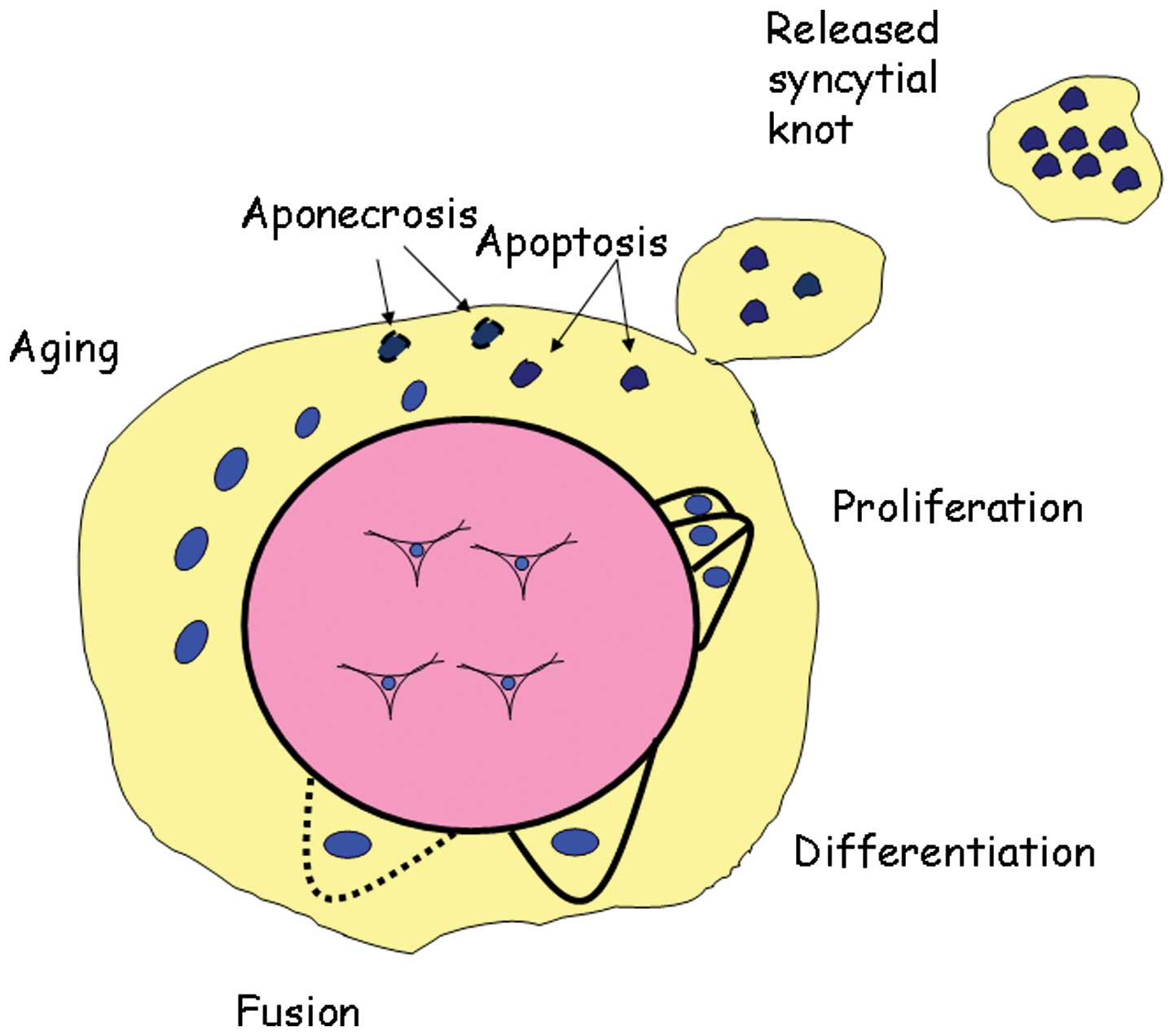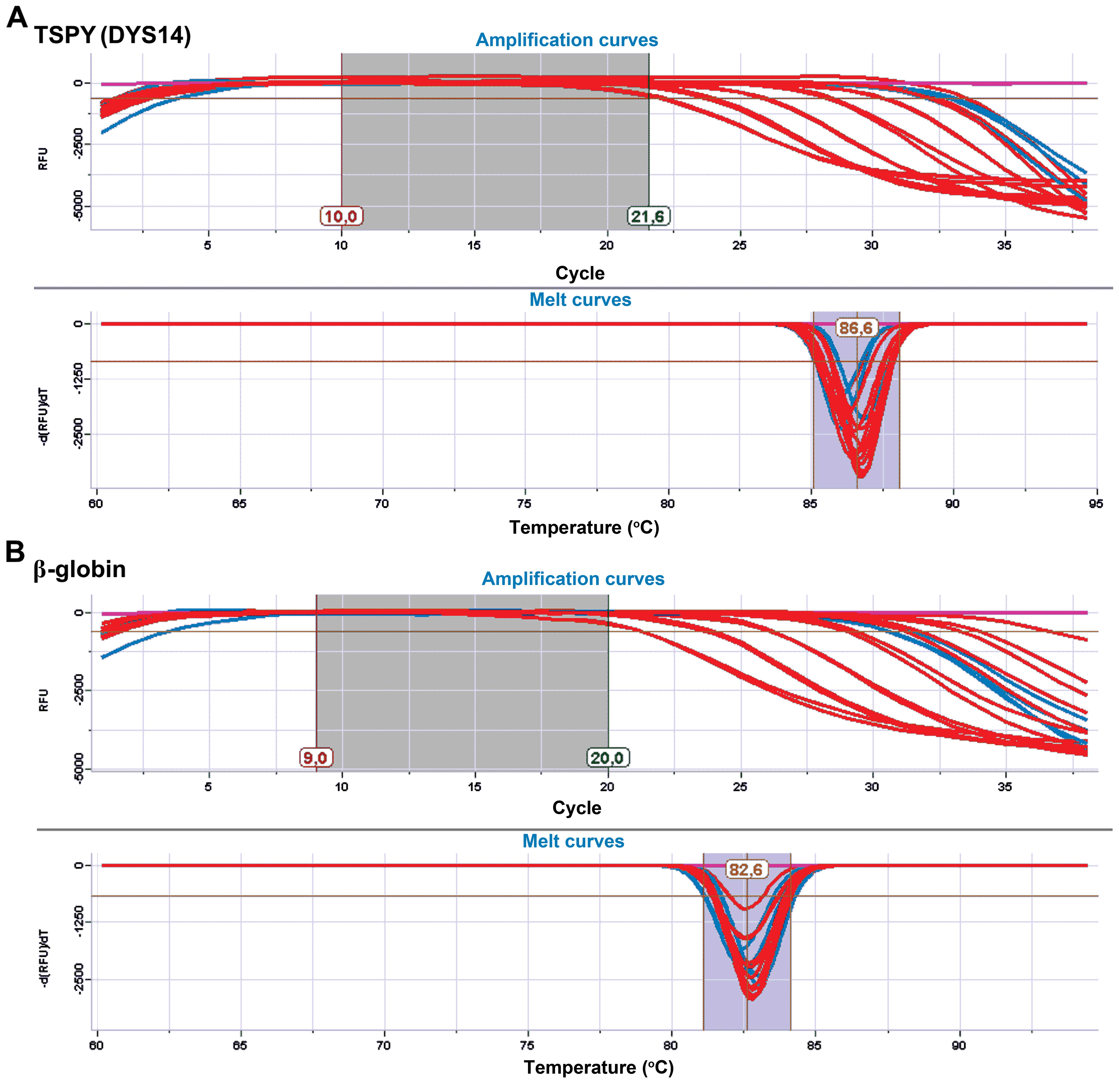|
1
|
Lo YM, Corbetta N, Chamberlain PF, Rai V,
Sargent IL, Redman CW and Wainscoat JS: Presence of fetal DNA in
maternal plasma and serum. Lancet. 350:485–487. 1997. View Article : Google Scholar : PubMed/NCBI
|
|
2
|
Lo YM: Fetal DNA in maternal plasma:
biology and diagnostic applications. Clin Chem. 46:1903–1906.
2000.PubMed/NCBI
|
|
3
|
Hahn S, Huppertz B and Holzgreve W: Fetal
cells and cell free fetal nucleic acids in maternal blood: new
tools to study abnormal placentation? Placenta. 26:515–526. 2005.
View Article : Google Scholar : PubMed/NCBI
|
|
4
|
Masuzaki H, Miura K, Yoshiura KI,
Yoshimura S, Niikawa N and Ishimaru T: Detection of cell free
placental DNA in maternal plasma: direct evidence from three cases
of confined placental mosaicism. J Med Genet. 41:289–292. 2004.
View Article : Google Scholar : PubMed/NCBI
|
|
5
|
Litton C, Stone J, Eddleman K and Lee MJ:
Noninvasive prenatal diagnosis: past, present, and future. Mt Sinai
J Med. 76:521–528. 2009. View Article : Google Scholar : PubMed/NCBI
|
|
6
|
Sifakis S, Papantoniou N, Kappou D and
Antsaklis A: Noninvasive prenatal diagnosis of Down syndrome:
current knowledge and novel insights. J Perinat Med. 40:319–327.
2012. View Article : Google Scholar : PubMed/NCBI
|
|
7
|
Lo YM, Leung TN, Tein MS, Sargent IL,
Zhang J, Lau TK, Haines CJ and Redman CW: Quantitative
abnormalities of fetal DNA in maternal serum in preeclampsia. Clin
Chem. 45:184–188. 1999.PubMed/NCBI
|
|
8
|
Leung TN, Zhang J, Lau TK, Chan LY and Lo
YM: Increased maternal plasma fetal DNA concentrations in women who
eventually develop preeclampsia. Clin Chem. 47:137–139.
2001.PubMed/NCBI
|
|
9
|
Zhong XY, Holzgreve W and Hahn S: The
levels of circulatory cell free fetal DNA in maternal plasma are
elevated prior to the onset of preeclampsia. Hypertens Pregnancy.
21:77–83. 2002. View Article : Google Scholar : PubMed/NCBI
|
|
10
|
Wataganara T and Bianchi DW: Fetal
cell-free nucleic acids in the maternal circulation: new clinical
applications. Ann N Y Acad Sci. 1022:90–99. 2004. View Article : Google Scholar : PubMed/NCBI
|
|
11
|
Levine RJ, Qian C, Leshane ES, Yu KF,
England LJ, Schisterman EF, Wataganara T, Romero R and Bianchi DW:
Two-stage elevation of cell-free fetal DNA in maternal sera before
onset of preeclampsia. Am J Obstet Gynecol. 190:707–713. 2004.
View Article : Google Scholar : PubMed/NCBI
|
|
12
|
Zimmermann B, El-Sheikhah A, Nicolaides K,
Holzgreve W and Hahn S: Optimized real-time quantitative PCR
measurement of male fetal DNA in maternal plasma. Clin Chem.
51:1598–1604. 2005. View Article : Google Scholar : PubMed/NCBI
|
|
13
|
Crowley A, Martin C, Fitzpatrick P, Sheils
O, O’ Herlihy C, O’ Leary JJ and Byrne BM: Free fetal DNA is not
increased before 20 weeks in intrauterine growth restriction or
pre-eclampsia. Prenat Diagn. 27:174–179. 2007. View Article : Google Scholar
|
|
14
|
Poon LC, Musci T, Song K, Syngelaki A and
Nicolaides KH: Maternal plasma cell-free fetal and maternal DNA at
11–13 weeks’ gestation: relation to fetal and maternal
characteristics and pregnancy outcomes. Fetal Diagn Ther.
33:215–223. 2013. View Article : Google Scholar
|
|
15
|
Stein W, Müller S, Gutensohn K, Emons G
and Legler T: Cell-free fetal DNA and adverse outcome in low risk
pregnancies. Eur J Obstet Gynecol Reprod Biol. 166:10–13. 2013.
View Article : Google Scholar
|
|
16
|
Sifakis S, Zaravinos A, Maiz N, Spandidos
DA and Nicolaides KH: First-trimester maternal plasma cell-free
fetal DNA and preeclampsia. Am J Obstet Gynecol. 201:e1–e7. 2009.
View Article : Google Scholar : PubMed/NCBI
|
|
17
|
Scharfe-Nugent A, Corr SC, Carpenter SB,
Keogh L, Doyle B, Martin C, Fitzgerald KA, Daly S, O’Leary JJ and
O’Neill LA: TLR9 provokes inflammation in response to fetal DNA:
mechanism for fetal loss in preterm birth and preeclampsia. J
Immunol. 188:5706–5712. 2012. View Article : Google Scholar : PubMed/NCBI
|
|
18
|
Gourvas V, Dalpa E, Konstantinidou A,
Vrachnis N, Spandidos DA and Sifakis S: Angiogenic factors in
placentas from pregnancies complicated by fetal growth restriction
(Review). Mol Med Rep. 6:23–27. 2012.PubMed/NCBI
|
|
19
|
Sekizawa A, Jimbo M, Saito H, Iwasaki M,
Matsuoka R, Okai T and Farina A: Cell-free fetal DNA in the plasma
of pregnant women with severe fetal growth restriction. Am J Obstet
Gynecol. 188:480–484. 2003. View Article : Google Scholar : PubMed/NCBI
|
|
20
|
Smid M, Galbiati S, Lojacono A, Valsecchi
L, Platto C, Cavoretto P, Calza S, Ferrari A, Ferrari M and
Cremonesi L: Correlation of fetal DNA levels in maternal plasma
with Doppler status in pathological pregnancies. Prenat Diagn.
26:785–790. 2006. View
Article : Google Scholar : PubMed/NCBI
|
|
21
|
Alberry MS, Maddocks DG, Hadi MA, Metawi
H, Hunt LP, Abdel-Fattah SA, Avent ND and Soothill PW:
Quantification of cell free fetal DNA in maternal plasma in normal
pregnancies and in pregnancies with placental dysfunction. Am J
Obstet Gynecol. 200:e1–e6. 2009. View Article : Google Scholar : PubMed/NCBI
|
|
22
|
Al Nakib M, Desbriere R, Bonello N,
Bretelle F, Boubli L, Gabert J and Levi-Mozziconacci A: Total and
fetal cell-free DNA analysis in maternal blood as markers of
placental insufficiency in intrauterine growth restriction. Fetal
Diagn Ther. 26:24–28. 2009. View Article : Google Scholar : PubMed/NCBI
|
|
23
|
Simons FE and Schatz M: Anaphylaxis during
pregnancy. J Allergy Clin Immunol. 130:597–606. 2012. View Article : Google Scholar : PubMed/NCBI
|
|
24
|
Hoesli I, Danek M, Lin D, Li Y, Hahn S and
Holzgreve W: Circulating erythroblasts in maternal blood are not
elevated before onset of preterm labor. Obstet Gynecol.
100:992–996. 2002. View Article : Google Scholar : PubMed/NCBI
|
|
25
|
Farina A, LeShane ES, Romero R, Gomez R,
Chaiworapongsa T, Rizzo N and Bianchi DW: High levels of fetal
cell-free DNA in maternal serum: a risk factor for spontaneous
preterm delivery. Am J Obstet Gynecol. 193:421–425. 2005.
View Article : Google Scholar : PubMed/NCBI
|
|
26
|
Illanes S, Gomez R, Fornes R,
Figueroa-Diesel H, Schepeler M, Searovic P, Serra R, Perez A and
Nien JK: Free fetal DNA levels in patients at risk of preterm
labour. Prenat Diagn. 31:1082–1085. 2011. View Article : Google Scholar : PubMed/NCBI
|
|
27
|
Jakobsen TR, Clausen FB, Rode L, Dziegiel
MH and Tabor A: High levels of fetal DNA are associated with
increased risk of spontaneous preterm delivery. Prenat Diagn.
32:840–845. 2012.PubMed/NCBI
|
|
28
|
El-Garf W, Sheba M, Salama S, Fouad R,
El-Shenawy M, Bibers M and Azmy O: Assesment of plasma cell-free
fetal DNA using hypermethylated RASSF1A in maternal plasma in cases
of spontaneous preterm labor. Gynecol Obstet. 12:49–52. 2013.
|
|
29
|
Quezada MS, Francisco C, Dumitrascu-Biris
K, Nicolaides KH and Poon LC: Fetal fraction of cell-free DNA in
maternal plasma in the prediction of spontaneous preterm delivery.
Ultrasound Obstet Gynecol. 34:274–282. 2014.
|
|
30
|
Vora NL, Johnson KL, Basu S, Catalano PM,
Hauguel-De Mouzon S and Bianchi DW: A multifactorial relationship
exists between total circulating cell-free DNA levels and maternal
BMI. Prenat Diagn. 32:912–914. 2012.PubMed/NCBI
|
|
31
|
Haghiac M, Vora NL, Basu S, Johnson KL,
Presley L, Bianchi DW and Hauguel-De Mouzon S: Increased death of
adipose cells, a path to release cell free DNA into systemic
circulation of obese women. Obesity (Silver Spring). 20:2213–2219.
2012. View Article : Google Scholar
|
|
32
|
Kim MJ, Kim SY, Park SY, Ahn HK, Chung JH
and Ryu HM: Association of fetal derived hypermethylated RASSF1A
concentration in placenta-mediated pregnancy complications.
Placenta. 34:57–61. 2013. View Article : Google Scholar
|
|
33
|
Sekizawa A, Sugito Y, Iwasaki M, Watanabe
A, Jimbo M, Hoshi S, Saito H and Okai T: Cell-free fetal DNA is
increased in plasma of women with hyperemesis gravidarum. Clin
Chem. 47:2164–2165. 2001.PubMed/NCBI
|
|
34
|
Sugito Y, Sekizawa A, Farina A, Yukimoto
Y, Saito H, Iwasaki M, Rizzo N and Okai T: Relationship between
severity of hyperemesis gravidarum and fetal DNA concentration in
maternal plasma. Clin Chem. 49:1667–1669. 2003. View Article : Google Scholar : PubMed/NCBI
|
|
35
|
Minagawa M, Narita J, Tada T, Maruyama S,
Shimizu T, Bannai M, et al: Mechanisms underlying immunologic
states during pregnancy: possible association of the sympathetic
nervous system. Cell Immunol. 196:1–13. 1999. View Article : Google Scholar : PubMed/NCBI
|
















